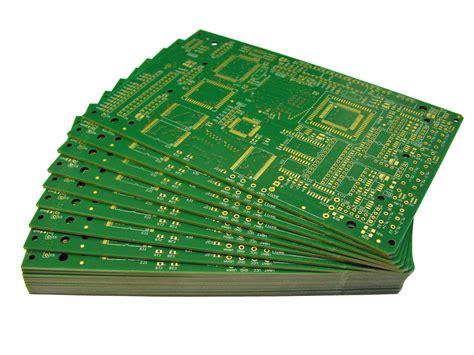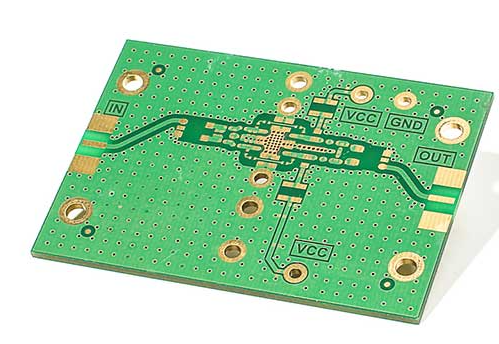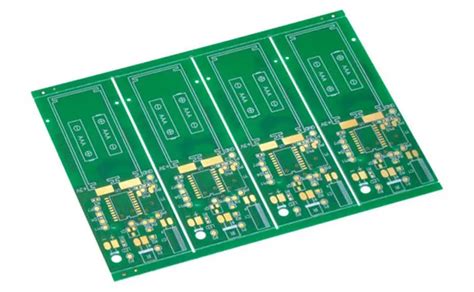High speed pcb signal design
Understanding Signal Integrity in High-Speed PCB Design
In the realm of high-speed PCB design, understanding signal integrity is paramount to ensuring the reliable performance of electronic circuits. As the demand for faster data transmission rates continues to escalate, the challenges associated with maintaining signal integrity become increasingly complex. Signal integrity refers to the quality and reliability of electrical signals as they travel through the PCB traces, and it is influenced by a myriad of factors including signal reflections, crosstalk, and electromagnetic interference (EMI).
To begin with, signal reflections occur when there is a mismatch in impedance along the transmission path.
This mismatch can cause part of the signal to be reflected back towards the source, leading to potential data corruption. To mitigate this issue, it is essential to maintain consistent impedance throughout the PCB traces. This can be achieved by carefully designing the trace width, spacing, and the dielectric properties of the PCB material. Additionally, the use of termination resistors at the end of transmission lines can help absorb reflected signals, thereby minimizing their impact.
Crosstalk, another critical factor affecting signal integrity, arises when signals in adjacent traces interfere with each other.
This phenomenon is particularly problematic in high-speed designs where traces are often routed in close proximity to one another. To reduce crosstalk, designers can employ techniques such as increasing the spacing between traces, using differential signaling, and incorporating ground planes to provide a return path for the signals. Differential signaling, in particular, is highly effective as it involves transmitting signals using two complementary traces, which helps cancel out any noise that may be induced.
Electromagnetic interference (EMI) is also a significant concern in high-speed PCB design.
EMI can originate from both internal and external sources, and it can severely degrade signal integrity if not properly managed. Shielding and grounding are two primary methods used to combat EMI. Shielding involves enclosing sensitive components and traces within a conductive barrier to block external electromagnetic fields. Grounding, on the other hand, provides a reference point for the signals and helps dissipate unwanted noise. Ensuring a low-impedance ground connection is crucial for effective EMI mitigation.
Moreover, the choice of PCB materials plays a vital role in maintaining signal integrity.
High-speed designs often require materials with low dielectric constant and low loss tangent to minimize signal attenuation and dispersion. Materials such as FR4, while commonly used, may not always be suitable for very high-speed applications. In such cases, advanced materials like Rogers or Teflon-based laminates may be preferred due to their superior electrical properties.
In addition to material selection, the layout and routing of the PCB are critical to preserving signal integrity.
Careful planning of trace lengths, via placement, and layer stack-up can significantly impact the performance of high-speed signals. For instance, minimizing the use of vias and ensuring that signal paths are as short and direct as possible can help reduce signal degradation. Furthermore, employing controlled impedance routing and maintaining consistent trace geometry are essential practices in high-speed PCB design.
In conclusion, understanding and addressing the various factors that influence signal integrity is essential for the successful design of high-speed PCBs. By carefully managing impedance, crosstalk, EMI, material selection, and layout considerations, designers can ensure that their circuits perform reliably at high data rates. As technology continues to advance, the importance of signal integrity in high-speed PCB design will only grow, making it a critical area of focus for engineers and designers alike.

Techniques for Minimizing Crosstalk in High-Speed PCBs
In the realm of high-speed printed circuit board (PCB) design, minimizing crosstalk is paramount to ensuring signal integrity and overall system performance. Crosstalk, the unwanted coupling of signals between adjacent traces, can lead to data corruption, increased error rates, and degraded signal quality. To mitigate these issues, designers employ a variety of techniques that address the root causes of crosstalk and enhance the reliability of high-speed PCBs.
One fundamental technique for minimizing crosstalk is the careful management of trace spacing.
By increasing the distance between adjacent signal traces, the potential for electromagnetic interference is significantly reduced. This approach is particularly effective in high-speed designs where signal frequencies are elevated, and the risk of crosstalk is consequently higher. Additionally, maintaining consistent trace spacing throughout the PCB layout helps to ensure uniform impedance, further contributing to signal integrity.
Another critical strategy involves the use of ground planes.
Ground planes act as a reference point for signals and provide a low-impedance path for return currents. By placing a continuous ground plane adjacent to signal layers, designers can effectively shield traces from one another, thereby reducing the likelihood of crosstalk. Moreover, ground planes help to minimize the loop area of signal paths, which is essential for controlling electromagnetic emissions and susceptibility.
In conjunction with ground planes, the implementation of differential signaling can also play a significant role in crosstalk reduction.
Differential pairs consist of two complementary signals that are routed closely together. The close proximity of these pairs ensures that any external noise or interference affects both signals equally, allowing the differential receiver to cancel out the common-mode noise. This technique is particularly advantageous in high-speed applications where signal integrity is critical.
Furthermore, the use of proper termination techniques is essential in high-speed PCB design.
Termination resistors, placed at the end of signal traces, help to match the impedance of the trace to the load, thereby preventing signal reflections that can contribute to crosstalk. There are various termination methods, including series, parallel, and Thevenin termination, each with its own advantages and considerations. Selecting the appropriate termination technique based on the specific requirements of the design is crucial for minimizing crosstalk.
Additionally, the careful routing of signal traces is a key consideration in high-speed PCB design.
Avoiding sharp bends and maintaining smooth, gradual curves in trace routing helps to prevent impedance discontinuities that can lead to signal reflections and crosstalk. Moreover, routing high-speed signals on internal layers, sandwiched between ground planes, can provide additional shielding and further reduce the risk of crosstalk.
The use of vias, while necessary for multi-layer PCBs, can also introduce crosstalk if not managed properly.
Minimizing the number of vias in high-speed signal paths and ensuring that vias are properly back-drilled can help to reduce the potential for crosstalk. Additionally, placing ground vias adjacent to signal vias can provide a return path for high-frequency currents, thereby mitigating crosstalk.
In conclusion, minimizing crosstalk in high-speed PCB design requires a comprehensive approach that encompasses trace spacing, ground planes, differential signaling, proper termination, careful trace routing, and via management. By employing these techniques, designers can effectively mitigate the adverse effects of crosstalk, ensuring robust signal integrity and optimal performance in high-speed electronic systems. The meticulous application of these strategies is essential for the successful design and implementation of high-speed PCBs in today’s increasingly complex and demanding technological landscape.

The Role of Impedance Matching in High-Speed PCB Signal Design
In the realm of high-speed printed circuit board (PCB) signal design, the concept of impedance matching plays a pivotal role in ensuring signal integrity and optimal performance. As electronic devices continue to evolve, operating at higher frequencies and faster data rates, the challenges associated with signal transmission become increasingly complex. Impedance matching, therefore, emerges as a critical factor in mitigating signal degradation, reflections, and other issues that can compromise the functionality of high-speed circuits.
To begin with, impedance matching refers to the process of making the impedance of a load (such as a transmission line or a component) equal to the source impedance.
This alignment is crucial because mismatched impedances can lead to signal reflections, which occur when a portion of the signal is reflected back towards the source rather than being transmitted to the load. These reflections can cause interference, signal loss, and timing errors, all of which are detrimental to high-speed signal transmission.
One of the primary reasons impedance matching is essential in high-speed PCB design is the need to maintain signal integrity.
At high frequencies, even minor impedance mismatches can result in significant signal reflections. These reflections can distort the signal waveform, leading to errors in data interpretation and reduced overall system performance. By ensuring that the impedance of the transmission line matches the source and load impedances, designers can minimize reflections and maintain the integrity of the signal as it travels through the PCB.
Moreover, impedance matching is vital for reducing electromagnetic interference (EMI).
High-speed signals are more susceptible to EMI, which can be exacerbated by impedance mismatches. When signals reflect and create standing waves, they can radiate electromagnetic energy, potentially interfering with other components and systems. Proper impedance matching helps to minimize these reflections, thereby reducing the potential for EMI and ensuring that the high-speed signals remain confined to their intended paths.
In addition to signal integrity and EMI reduction, impedance matching also plays a role in power transfer efficiency.
When impedances are matched, the maximum amount of power is transferred from the source to the load. This is particularly important in high-speed applications where power loss can lead to reduced signal amplitude and increased susceptibility to noise. By optimizing impedance matching, designers can ensure that the signal maintains sufficient power levels throughout its transmission, thereby enhancing the overall performance of the PCB.
Furthermore, achieving impedance matching in high-speed PCB design requires careful consideration of various factors, including the choice of materials, trace geometry, and layout techniques.
For instance, the dielectric constant of the PCB substrate, the width and thickness of the traces, and the spacing between them all influence the characteristic impedance of the transmission lines. Designers must meticulously calculate and control these parameters to achieve the desired impedance matching.
In conclusion, the role of impedance matching in high-speed PCB signal design cannot be overstated. It is a fundamental aspect that directly impacts signal integrity, EMI reduction, and power transfer efficiency. As electronic devices continue to push the boundaries of speed and performance, the importance of precise impedance matching will only grow. By understanding and implementing effective impedance matching techniques, designers can ensure that their high-speed PCBs deliver reliable and high-performance signal transmission, meeting the demands of modern electronic applications.

Best Practices for Layer Stackup in High-Speed PCB Design
In the realm of high-speed PCB signal design, the layer stackup plays a pivotal role in ensuring signal integrity, minimizing electromagnetic interference (EMI), and optimizing overall performance. A well-considered layer stackup can significantly enhance the functionality and reliability of high-speed circuits. To achieve this, several best practices should be meticulously followed.
Firstly, it is essential to understand the importance of controlled impedance in high-speed PCB design.
Controlled impedance ensures that the signal transmission lines maintain a consistent impedance, which is crucial for minimizing signal reflections and maintaining signal integrity. To achieve controlled impedance, the placement of signal layers and reference planes must be carefully planned. Typically, signal layers should be adjacent to continuous ground or power planes. This proximity helps to stabilize the impedance and provides a return path for the signals, thereby reducing the risk of signal degradation.
Moreover, the arrangement of layers in the stackup should be symmetrical.
Symmetry in the layer stackup helps to balance the mechanical stresses during the PCB manufacturing process, which in turn reduces the risk of warping and other structural issues. A common practice is to place high-speed signal layers in the middle of the stackup, sandwiched between ground and power planes. This configuration not only aids in controlled impedance but also provides effective shielding against EMI.
Transitioning to the topic of signal integrity, it is crucial to minimize crosstalk between adjacent signal traces.
Crosstalk occurs when a signal in one trace induces an unwanted signal in a neighboring trace, leading to potential data corruption. To mitigate crosstalk, designers should maintain adequate spacing between high-speed signal traces and avoid running them in parallel for long distances. Additionally, employing differential pairs for high-speed signals can further reduce crosstalk and improve signal integrity. Differential pairs consist of two complementary signals that are routed together, with their electromagnetic fields canceling each other out, thereby minimizing interference.
Another best practice involves the use of multiple ground planes.
Ground planes serve as a reference for signal return paths and help to reduce noise and EMI. In high-speed PCB designs, it is advisable to have at least one dedicated ground plane. For multi-layer PCBs, incorporating multiple ground planes can provide additional benefits, such as improved thermal management and enhanced signal integrity. When designing the stackup, it is important to ensure that the ground planes are continuous and free of splits or gaps, as discontinuities can disrupt the return paths and degrade signal performance.
Furthermore, power distribution is a critical aspect of high-speed PCB design.
Power planes should be strategically placed to provide stable and low-impedance power delivery to the components. It is beneficial to use a power plane adjacent to a ground plane, creating a decoupling capacitance that helps to filter out noise and stabilize the power supply. Proper decoupling capacitors should also be placed close to the power pins of high-speed components to further enhance power integrity.
In conclusion, the layer stackup in high-speed PCB design is a fundamental factor that influences signal integrity, EMI, and overall circuit performance. By adhering to best practices such as controlled impedance, symmetrical layer arrangement, minimizing crosstalk, utilizing multiple ground planes, and strategic power distribution, designers can create robust and reliable high-speed PCBs. These practices not only ensure optimal performance but also contribute to the longevity and dependability of the electronic devices they support.






